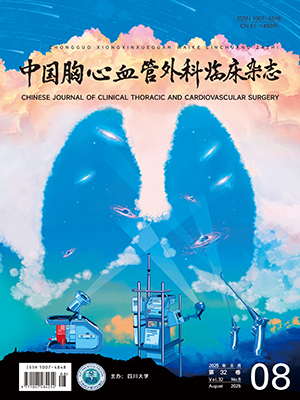Objective To evaluate the efficacy of lung-protective strategies of ventilation (LPSV) in acute respiratory distress syndrome (ARDS) patients after thoracic operation. Methods-Thirtyseven ARDS patients without preoperative complications who had underwent thoracic surgery successfully were divided into the conventional mechanical ventilation group (CMV group, n=20) and lungprotective strategies of ventilation group (LPSV group,n=17). Results of arterial blood gas, index of oxygenation (PaO2/FiO2), airway plateau pressure (Pplat), inspiration peak pressure (PIP), PEEP, after ventilation treatment 24 h and mechanical ventilation time, pulmonary barotrauma and so on were observed. Results The mechanical ventilation time, pulmonary barotrauma and mortality of the LPSV group were 7.3d, 5.9% and 29.4% respectively, which were significantly better than those in the CMV group(17.6d,15.0% and 60.0%, P lt;0.05). peak inflation pressure (PIP),Pplat(plat pressure) in the LPSV group were significantly lower than those in the CMV group (P lt;0.05). However, there were no significant differences including arterial oxygen saturation (SaO2),pH, partial pressure of carbon dioxide in artery (PaCO2) and PaO2/FiO2 in two groups. Conclusion LPSV is more effective for the patients in the ARDS patients after thoracic operation compared to CMV, which can markedly reduce the ventilatorinduced lung injuryand (VILI) and mortality.
Citation: HE Ping,WU Wei,WANG Haidong,YANG Kang,LIAO Kelong,ZHANG Wei.. The Application of Lungprotective Strategies of Ventilation for Patients with Acute Respirator Distress Syndrome after Thoracic Operation. Chinese Journal of Clinical Thoracic and Cardiovascular Surgery, 2008, 15(3): 191-194. doi: Copy
Copyright © the editorial department of Chinese Journal of Clinical Thoracic and Cardiovascular Surgery of West China Medical Publisher. All rights reserved




